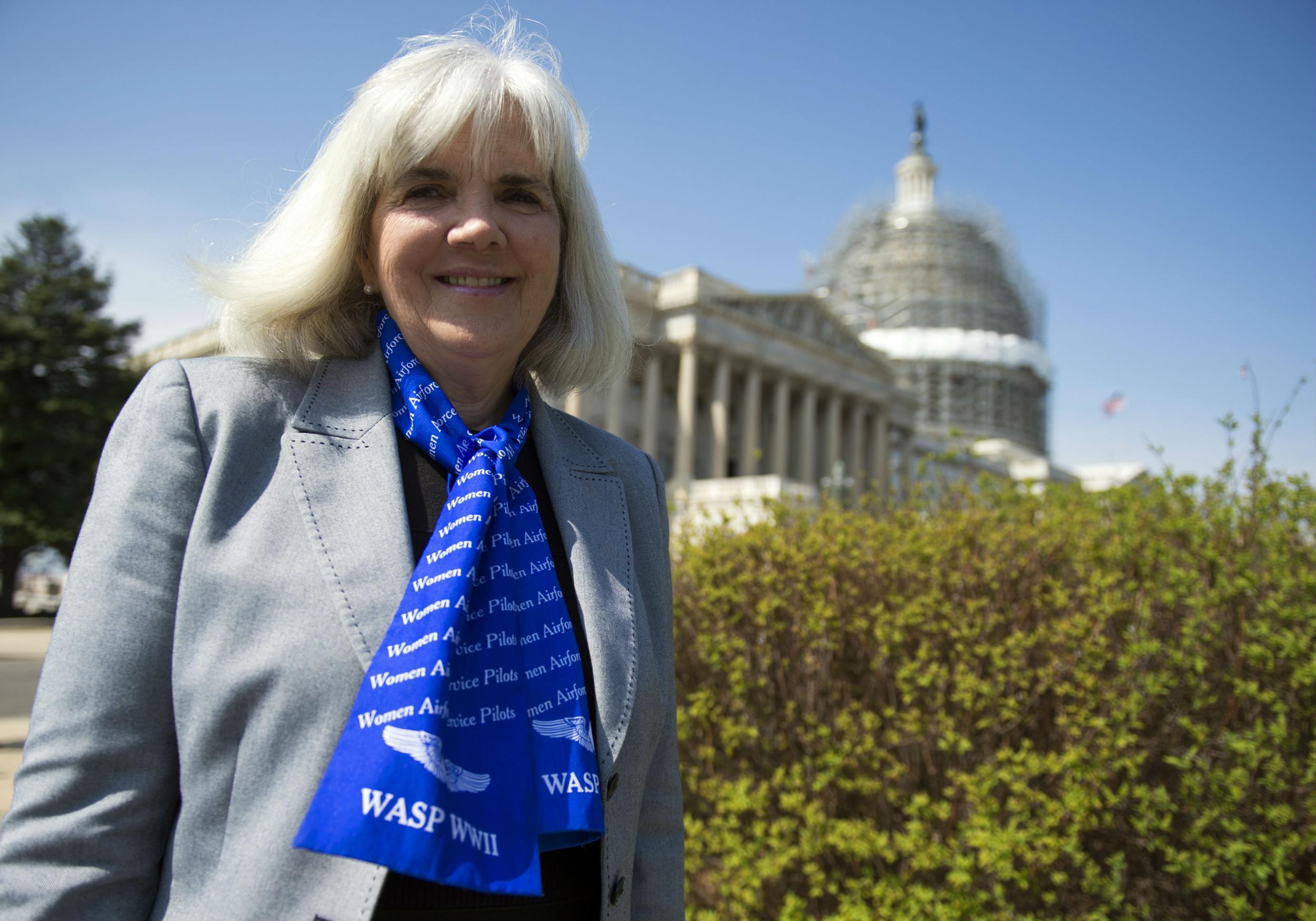Ashes of woman Second World War pilot finally laid to rest in Arlington Cemetery after ban on WASP brigade is lifted
President Barack Obama has signed a law reversing ban on WASPs being laid to rest at Arlington

Your support helps us to tell the story
From reproductive rights to climate change to Big Tech, The Independent is on the ground when the story is developing. Whether it's investigating the financials of Elon Musk's pro-Trump PAC or producing our latest documentary, 'The A Word', which shines a light on the American women fighting for reproductive rights, we know how important it is to parse out the facts from the messaging.
At such a critical moment in US history, we need reporters on the ground. Your donation allows us to keep sending journalists to speak to both sides of the story.
The Independent is trusted by Americans across the entire political spectrum. And unlike many other quality news outlets, we choose not to lock Americans out of our reporting and analysis with paywalls. We believe quality journalism should be available to everyone, paid for by those who can afford it.
Your support makes all the difference.It was allowed, and then it wasn’t. But on Wednesday, the ashes of Elaine Harmon, a woman pilot who flew non-combat missions in the Second World War, will be laid to rest at Arlington Cemetery.
For family members, like granddaughter, Erin Miller, the farewell to Ms Harmon’s ashes inside the walls of America’s most hallowed military resting ground will be a deeply personal moment.
But it will also be a celebration of a political battle won on behalf of Ms Harmon and all the other women who served with the Women Airfare Service Pilots (WASPs), flying military aircraft on non-combat outings so that male pilots were freed up to engage the enemy.
It was a struggle that began last year when the stewards of Arlington, concerned about dwindling space, said they would no longer be receiving urns of ashes from WASPs. A story about it by the Associated Press sparked a campaign to have the ban reversed, fuelled by a change.org petition that garnered no fewer than 175,000 signatures.
In the end it took an Act of Congress to open the cemetery to the WASPs once again. It was duly signed into law by President Barack Obama in May this year. Long unsung, the women, only a handful of whom are still living, finally had full recognition for the service they gave.

The legislation was sponsored by Congresswoman Martha McSally of Arizona, herself a retired Air Force pilot, and Senator Joni Ernst, a Republican from Iowa. “They willingly put their lives on the line in service to our great country, and made tremendous sacrifices to join a ground-breaking flight programme to free up their male counterparts for combat duty,” Ms Ernst said.
“Restoring what was once the right of the WASP to have their ashes placed at Arlington National Cemetery is undoubtedly the right thing to do in honouring these extraordinary women for their remarkable military service.”
The laying to rest of Ms Harmon, who died in April of last year aged 95 – her ashes until Wednesday languished in a bedroom closet in the family’s home – marks the first time the new dispensation for WASP women will be put into practice.
“It sounds funny, but we’e all kinds of excited,” Ms Miller told the AP. “In a way, we’ve already grieved, and this now is about closure.”
Altogether about one thousand American women served as WASPs between 1942 and 1944. At first not considered fully-fledged members of the US military, they were granted the status of veterans for the first time only in 1977.
Although they were not flying across enemy lines, their missions were not always without peril. Among them was flying combat planes to test them after they had been repaired and towing targets so other pilots could use them for firing practice using live ammunition.
Thirty eight of the WASP pilots were killed before the programme was ended. Fewer than 100 are still alive and the youngest of them is now 93-years-old.
Join our commenting forum
Join thought-provoking conversations, follow other Independent readers and see their replies
Comments